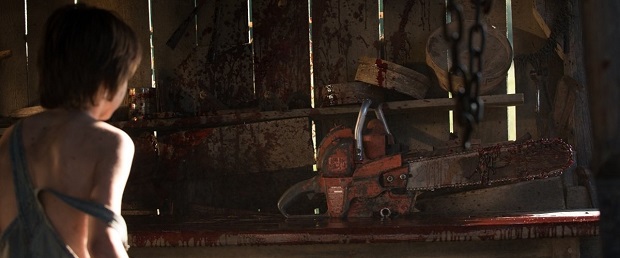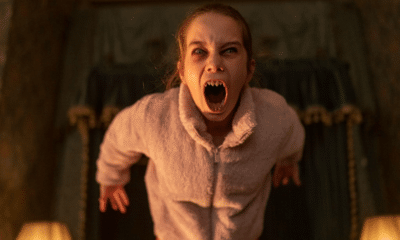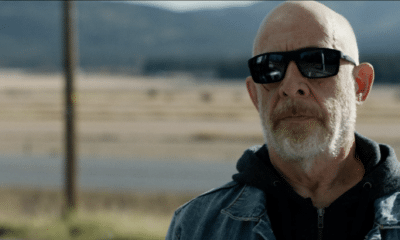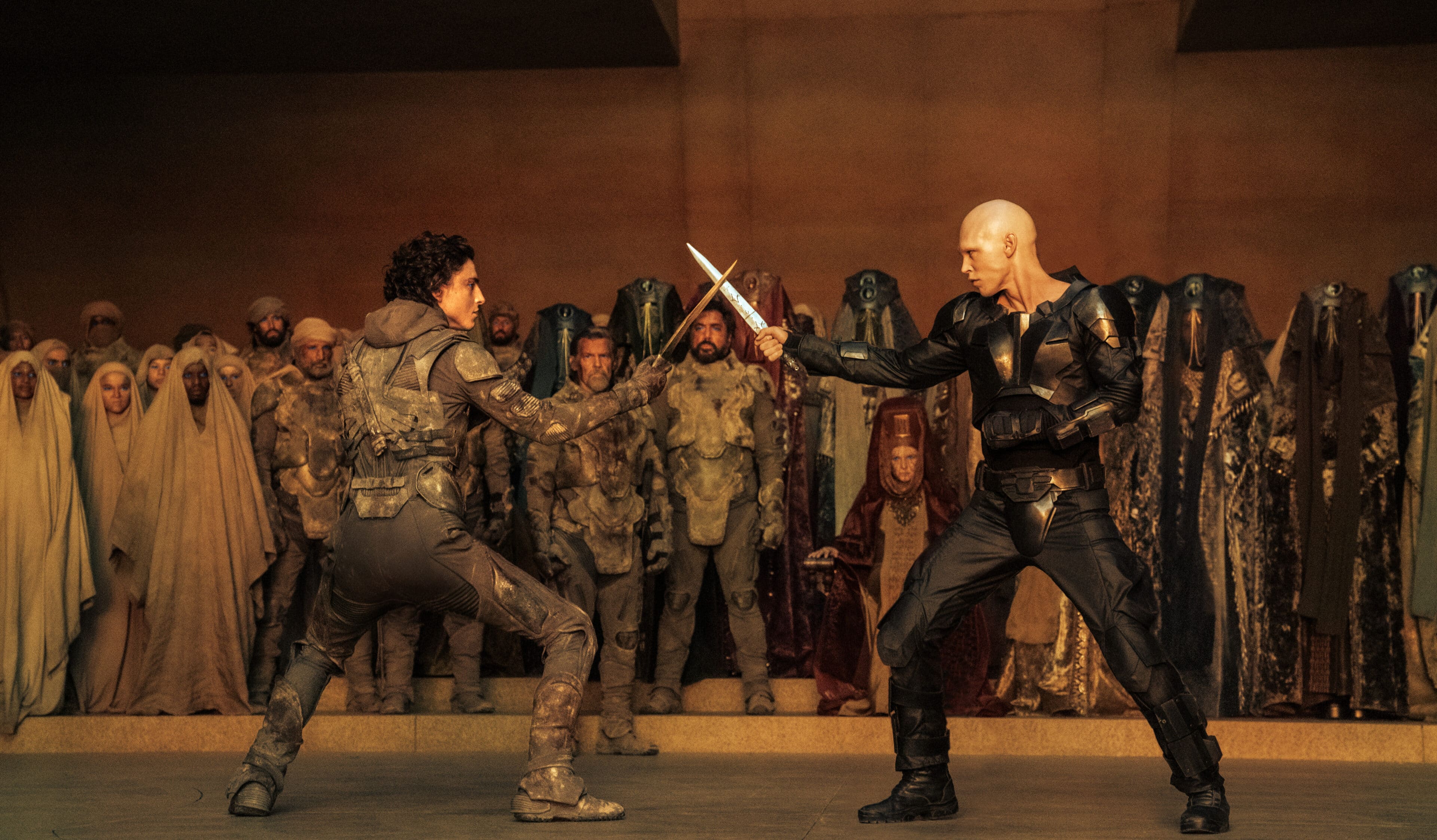 This fond revisiting of the slasher movie, and its rise to glory, is in honour of this weeks’ Fright Fest, where our man, Tom Fordy, will be scaring himself witless, and then reporting on his spine-chilling experiences.
This fond revisiting of the slasher movie, and its rise to glory, is in honour of this weeks’ Fright Fest, where our man, Tom Fordy, will be scaring himself witless, and then reporting on his spine-chilling experiences.
Since time immemorial human beings have had a strange and morbid fascination with fear. It can be as mysterious and pleasurable as love, and just as painful too. So, it is no surprise that the horror genre, and its love child, the slasher sub genre, has become such a popular phenomenon with filmgoers the world over.
George Archainbaud’s THIRTEEN WOMEN (1932), and Michael Powell’s PEEPING TOM (1960) could be labelled as precursors to the slasher genre, but Alfred Hitchcock’s PSYCHO (1960) innovated and utilised what would soon become the familiar genre-specific criteria.
Norman Bates: ‘She might have fooled me, but she didn’t fool my mother.’
Janet Leigh stars alongside Anthony Perkins in this masterpiece, revered by fans, critics and filmmakers alike. The story follows Marion Crane (Leigh), who, having stolen money from her employer in order to pay for her prospective wedding, decides to lay low at a motel for a while. However, the disturbing ambience surrounding the motel, and its manager, Norman Bates (Perkins), leads to her gravely regretting her decision.
The techniques used by Hitchcock, both in terms of storytelling and directorial style, have come to form the spine of many modern horror and slasher movies. Perhaps the most commonly emulated are the point-of-view shots from the killer’s perspective, as well as the slow and methodical unravelling of a scene, in order to instill an uncomfortable sense of dread in the viewer. This is doubtless one of the main reasons he has come to be known as the ‘master of suspense’.
 The Texas Chainsaw Massacre (1974)
The Texas Chainsaw Massacre (1974)
Hitchhiker: ‘You could have dinner with us… my brother makes good head cheese! You like head cheese?’
They say that a piece of art should make you feel something, irregardless of what that feeling may be. If that is the case, then Tobe Hooper’s film is a bona fide work of art, even if the common feeling it inspired upon its release was one of abject hate. The controversy that surrounded the film reverberated for decades and cemented the theory that 1970s America was not ready for the level of terror depicted in the film.
The narrative follows the archetypal group of youngsters as they become stranded in the middle of nowhere, due to their van running out of fuel. They are then picked off one by one, and murdered by a family of bizarre cannibals. The film was one of the first to incorporate several traits of the slasher genre, which have been adopted by hundreds of subsequent movies, including the lone surviving female character, and the large, seemingly mute, antagonist (Leatherface). Leatherface, portrayed by Gunnar Hansen, is loosely based on the real-life serial killer, Ed Gein, and has become a cult icon amongst horror fans.
Dr Sam Loomis: ‘I spent eight years trying to reach him, and then another seven trying to keep him locked up because I realized what was living behind that boy’s eyes was purely and simply… evil.’
John Carpenter directed and co-wrote this chilling story about a young boy (Michael Myers) who kills his sister, Judith, before spending the next fifteen years in a psychiatric hospital, under the care of Dr. Sam Loomis (Donald Pleasance). On halloween in 1978, however, he resurfaces, breaking out of the hospital and returning to his home town to wreak havoc. Dr Loomis follows him to try and ensure he does not kill again.
Carpenter’s work is clearly influenced by both Hitchcock and Hooper in a myriad of ways. The film is a bricolage of new material, mixed with the tropes and conventions innovated by PSYCHO and THE TEXAS CHAINSAW MASSACRE. The erratic score of the film is comparable to the familiar theme from PSYCHO, and the antagonist, Michael Myers, never speaks; a clear nod to the mightily deranged Leatherface.
Pamela Voorheyes: ‘You see, Jason was my son, and today is his birthday…’
Inspired by Carpenter’s Halloween, Sean S. Cunningham’s slasher film spawned no less than eleven sequels/prequels, a television show, as well as numerous novels and graphic novels. Its success is admirable, even if some of the sequels are not. The antagonist throughout most of the franchise, Jason Voorheyes, is, once again, a seemingly immortal being, who terrorizes anyone that stands in his way; especially if they are teenagers and mildly attractive.
Jason, along with Leatherface, Michael Myers, and Freddy Krueger (from A NIGHTMARE ON ELM STREET) could be described as the protagonist in many of the ensuing sequels. As time passed by, audiences began to find slasher films increasingly humorous instead of frightening, going so far as to encourage the freaks and ghouls more than their victims. Jason and Leatherface, unlike Freddy and Michael, had allegorical back stories, that placed much of the blame for their vicious deeds on the human race, rather than on a personal deficiency. Jason ‘died’ due to the negligence of the staff at camp crystal lake, whereas Leatherface was oppressed and controlled by his barbaric family.
A Nightmare On Elm Street (1984)
Freddy Krueger: ‘I’m your boyfriend now, Nancy.’
Freddy Krueger is a disfigured and spectral child murderer (though he originally was a paedophile as well), who stalks the dreams of the teenagers that inhabit Elm street. Robert Englund portrays him in the original films, and has become a commodity in the industry as a result. He breathed life into the role, ensuring his demonic laugh, evil grin, and caustic one-liners pervaded the dreams of terrified children and adults for years to come.
Krueger begins to murder the teenagers of Elm street, often with his iconic razor-blade fingers, in order to seek revenge on their parents, who, had formed a mob and burned him alive years earlier. They ironically ‘killed’ the serial killer, who had been stalking the streets of their ‘perfect’ little town.
 Wes Craven’s New Nightmare (1994)
Wes Craven’s New Nightmare (1994)
Freddy Krueger: ‘Come here, my piggy. I’ve got some gingerbread for you.’
Wes Craven returned to the director’s chair, having passed the honour on to several others for the sequels. This postmodern, self referential approach to the genre, sees Freddy Krueger begin to eliminate members of the cast and crew of a new movie concerning his dastardly deeds. It reunited several stars from the original, including Robert Englund and Heather Langenkamp.
Contrary to popular belief, it wasn’t Craven’s SCREAM that first approached the subject from a parodical point of view. However, NEW NIGHTMARE was not nearly as notorious or well received as his later effort. A less restrictive production process allowed him to re-animate the Krueger character to show him as he originally intended. Krueger appeared more sinister than in previous outings, and his infamous hand had a more anatomical look to it compared to the original glove; the appearance of tissue and bone made for a more organic result.
Killer’s voice: ‘What’s the matter Sidney? You look like you’ve seen a ghost.’
SCREAM follows teenager Sidney Prescott (Neve Campbell), her various high school friends, and several citizens of the fictional town of Woodsboro, as a killer known only as Ghostface poaches them for pleasure.
Craven – arguably the godfather of the slasher movie (if Hitchcock was the nurturing father) – returned to the more conventional approach with this offering, focusing on the lead female protagonist, Sidney, as opposed to the killer and anti-hero. To add mystery and suspense, the story follows the whodunnit structure, revealing the killer’s identity at the climax of the film.
Sweeney Todd: ‘People want to see me hanged or torn apart, but they don’t want to see me shaved badly.’
David Moore took the helm for this adaptation of the Victorian penny dreadful ‘The String of Pearls’. Ray Winstone portrays the eponymous ‘demon barber’, who carefully and clinically disposes of his clients via his partner in crime, Mrs. Lovett’s (Essie Davis) delicious meat pies.
Winstone’s performance is nothing short of fascinating. He almost forces the viewer to sympathise with the introverted and conflicted barber, who is sickened by the injustice in the world, and has been afflicted with a deep-seated emotional grief since childhood.
There has been a spate of classic horror re-workings recently, many of which have been produced by Platinum Dunes, a company created in 2001 by Michael Bay, Brad Fuller and Andrew Form. A NIGHTMARE ON ELM STREET is the most recent in a group that includes THE TEXAS CHAINSAW MASSACRE, THE AMITYVILLE HORROR, THE HITCHER, and FRIDAY THE 13th to have been churned out by the trio of producers/directors. This lack of imagination and new material suggests that the golden age of the slasher has passed, although the occasional worthwhile offering does still emerge from the darkness.
Adaptations, sequels, prequels and reboots are to be expected in this capitalistic world, and though usually disappointing in comparison to their original counterparts, can occasionally yield impressive results; SWEENEY TODD being a pertinent example. However, re-making films that are not even thirty years old yet – simply for the money, or because you cannot concoct anything better yourself – does not bode well for the future of the genre.
The beauty of art partly derives from it being a product of its time, culture and environment, so should be appreciated for what it is. Unless there is a dramatic improvement to be made to it, you are damaging its aura by creating a slightly more up to date, polished version of it.
For those ardent horror fans out there this lull in original creativity may be disheartening; but they can never take away our highly cherished memories.
Martin has been a film buff (or geek, if you prefer) for as long as he can remember. However, he lives and longs for storytelling of all kinds, and writes across numerous mediums to feed his insatiable appetite. He lives in north-west London, and his favourite films are, possibly: PAN'S LABYRINTH, THEY LIVE, PSYCHO, HIGH FIDELITY, ONE FLEW OVER THE CUCKOO'S NEST, STAND BY ME, SIDEWAYS and OFFICE SPACE.

Latest Posts
-


Film Trailers
/ 11 hours agoM. Night Shyamalan’s ‘Trap’ trailer lands
Anew experience in the world of M. Night Shyamalan.
By Paul Heath -


Film News
/ 1 day agoFirst ‘Transformers One’ teaser trailer debuts IN SPACE!
The animated feature film is heading to cinemas this September.
By Paul Heath -


Film Reviews
/ 1 day ago‘Abigail’ review: Dirs. Matt Bettinelli-Olpin & Tyler Gillett (2024)
Matt Bettinelli-Olpin and Tyler Gillett direct this new horror/ heist hybrid.
By Awais Irfan -


Film Trailers
/ 1 day agoNew trailer for J.K. Simmons-led ‘You Can’t Run Forever’
A trailer has dropped for You Can’t Run Forever, a new thriller led by...
By Paul Heath

















